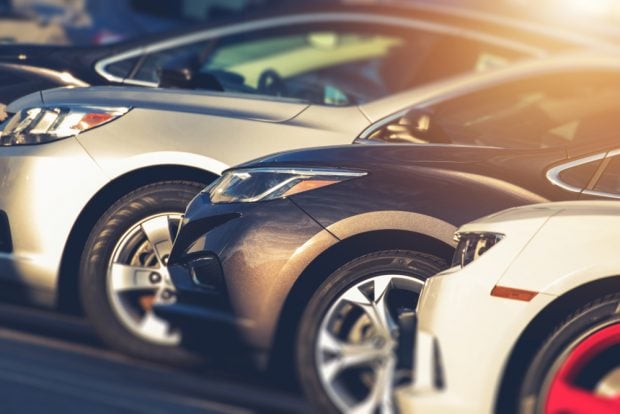 Pre-owned vehicles for sale. (Source: Shutterstock)
Pre-owned vehicles for sale. (Source: Shutterstock)
Buyers have responded to record high car prices by borrowing more heavily and making larger down payments.
From the fourth quarter to the second quarter, average new car prices rose 1.5% to $40,656, while used car prices rose 9.3% to $30,224, according to data released Thursday by Edmunds, a car-buying analytics company based in Santa Monica, Calif.
Recommended For You
Buyers are putting down about 12% on new and used cars, rates that have risen over the past year.
To keep up with the steep increases in used cars, they're borrowing more money for longer terms.
Lower interest rates have helped a little. They averaged 7.9% for used cars in the second quarter, down 30 basis points from a year earlier and 20 bps from the first quarter.
Still, monthly payments on used cars were $473 in the second quarter, up 14.8% from a year earlier and up 9.5% from the first quarter.

Jessica Caldwell, Edmunds' executive director of insights, said the market is tilting to the affluent.
"This is not a buying environment for people on the fringe of being able to afford new car ownership," Caldwell said. "Average loan terms are already quite long and interest rates are relatively low on average, so the consumer really has to make up the difference in price."
Tighter inventory and fewer discounts in the new car market are pushing more buyers into the used-car market, "driving used car prices to astronomical levels," she said. "Car shoppers are used to getting deals, and often far below the sticker price for new, so anyone returning to the car market for the first time in a while is in for some serious sticker shock."
The slower growth in new car prices reflects a shift in the mix with more sales of lower-cost SUVs and passenger cars, and fewer beefy pickups.
"Pricey, optioned-out pickup trucks have been the darling of consumers and the primary culprit in boosting the industry average transaction price during the pandemic, but the well of inventory has finally run dry," Caldwell said.
Cox Automotive has forecast dealers will sell 16.5 million new cars and light trucks this year. Senior economist Charlie Chesbrough said the pace of sales in the first half was a seasonally adjusted annual rate (SAAR) of 17.1 million vehicles, but the second half of the year will be slower.
"Even though there will be strong demand from consumers, they can't buy what isn't there," Chesbrough said. "How long the supply crunch will last is difficult to estimate since the issue varies greatly across product lines and geography, but certainly the next few months will be revealing."
Jonathan Smoke, chief economist for Cox Automotive, said tight supplies have allowed dealers to command high prices and make record profits.
"As far as retail auto sales go, the pandemic is in the review mirror," Smoke said. "Dealers are focused principally on one problem: Inventory."
© 2025 ALM Global, LLC, All Rights Reserved. Request academic re-use from www.copyright.com. All other uses, submit a request to [email protected]. For more information visit Asset & Logo Licensing.








